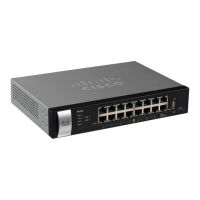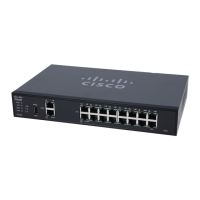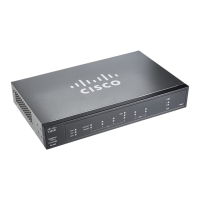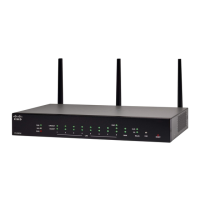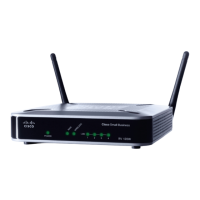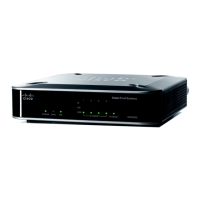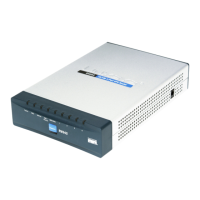System Management
Dual WAN Connections
56 Cisco RV320/RV325 Administration Guide
5
Network Service Detection
Optionally, check the box to allow the device to detect network connectivity by
pinging specified devices and enter the settings as described here:
• Retry count—Number of times to ping a device. The range is 1 to 99999
and the default is 3.
• Retry timeout—Number of seconds to wait between pings. The range is 1
to 9999999 and the default is 10 seconds.
• When Fail—Action taken if a ping test fails:
- Generate the Error Condition in the System Log—Records the failure
in the System Log. There is no failover to the other interface.
- Keep System Log and Remove the Connection—Failover occurs and
the backup interface is used. When the WAN port connectivity is
restored, its traffic is restored.
• Default Gateway, ISP Host, Remote Host, and DNS Lookup Host—
Select the device that you want to ping to determine network connectivity.
For an ISP host or a remote host, enter the IP address. For a DNS Lookup
host, enter a host name or domain name. Uncheck a box if you do not want
to ping this device for network service detection.
Protocol Binding
Protocol Binding requires this interface to be used for specified protocols, source,
and destination addresses. It allows an administrator to bind specific outbound
traffic to a WAN interface. This is commonly used when the two WAN interfaces
have different characteristics, or where certain traffic from LAN to WAN must go
through the same WAN interface.
To add or edit table entries, click Add or Edit and enter the following:
• Service—Service (or All Traffic) to bind to this WAN interface. If a service is
not listed, you can click Service Management to add it. For more
information, see Adding or Editing a Service.
• Source IP and Destination IP—Internal source and the external destination
for the traffic that goes through this WAN port. For a range of IP addresses,
enter the first address in the first field and the final address in the To field.
For a single IP address, enter the same address in both fields.
To enable the protocol binding, check the box to enable this rule, or uncheck the
box to disable it.
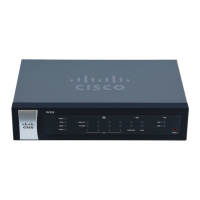
